Macpac 90 Litre Ultralight Pack Liner
Accessory
Rating
| Rating: | 9 / 10 |
| Value for Money | 2.2 / 2.5 |
| Versatility | 2.4 / 2.5 |
| Weight | 2.1 / 2.5 |
| Durability | 2.3 / 2.5 |
Macpac 90 Litre Ultralight Pack Liner Review
On almost all my hikes, the largest pack I use is approximately 50 litres in capacity so why on earth would I need a 90 litre pack liner? There are two key reasons for owning a liner this big.
The first question many people ask is why bother to use a pack liner and my best response is by way of an experience relayed to me by another hiker. This hiker was undertaking a two week long trip on the Larapinta Trail and due to recent heavy rains, had to traverse a gully that involved him wading in water almost up to his chest level. He held his pack up above his head but part way through the crossing dropped his pack into the water. He quickly managed to retrieve it but not before it had submerged. While the majority of his gear managed to survive the dunking, albeit a little damp, the SLR camera wasn’t so lucky. Even worse, it wasn’t his camera – he had borrowed it from a friend!
In this instance a pack cover which is designed to keep rain off the pack wouldn’t have helped. The other issue with pack covers is that in torrential sustained rain they will not usually prevent water entering your pack as the water will run down your back and soak in through the harness from the outside in. So for me a pack liner is a non negotiable piece of equipment on all overnight hikes as well as those day hikes where I’m expecting rain or know I have water crossings.
If used correctly they will prevent water entering your pack, not only preventing your expensive bits of technology such as cameras, phones and iPads from getting wet but will also ensure you have dry clothing and sleep gear at the end of the day. In addition to providing a waterproof layer, these pack liners also provide protection from fine dust and grit which is all too common in arid Australia.
For a pack liner to do its job and keep water/dust out of your pack you need to close it neatly using the top closure system which includes rolling the top down.
These pack liners come in three sizes; 50 litres, 70 litres and 90 litres and you match the dry bag size to the corresponding pack size. A word of warning here. If as an example you have a full 5o litre pack and a 50 litre pack liner, you may well be cutting it fine when it comes to rolling the pack liner top down to seal it. I’m currently using an Ospey Exos 48 pack. When my pack is full to the brim for a long trip, the 50 litre liner is not quite large enough so I usually use the 70 litre size to ensure that the top can be rolled over enough to provide a decent water proof seal. Whatever size liner you choose, when considering the size of the liner you may be better of going up a size to ensure that its closes properly.
So why then am I discussing the 90 litre pack liner? Put simply I will carry a 90 liner pack liner for two reasons. First I also use a 70 litre pack and while I own a 70litre pack, it’s been a long time since I’ve used it. My main reason for the 90 litre pack liner is a bit counter intuitive in that it becomes a fully enclosed pack liner. If I’m doing a walk in central Australia where its really dusty or doing a walk that includes deep inlet/river crossings I will in addition to using by internal pack liner, carry my pack at chest height or on my shoulders fully sealed inside the 90 litre liner. Very much overkill for most of my experiences but I’ve never had wet gear or lost electronics following submergence.
Another bonus of a pack liner of this size is that when it’s been raining sometimes its hard to find a place to sit and stay dry while you’re taking a break. In the image below Gill is sitting on a 90 litre pack liner on a wet grassy bank – the is big enough for us both to sit comfortably.
This range of pack liners are by no means the heaviest on the market nor are they the lightest at 230 grams which sits in the mid range of materials used for liners. However, the material is durable and robust and lasts well.
Now for the negatives. There is only one colour choice with this liner which is a dull yellow colour but really that’s not a major issue. Price wise this 90 pack liner has an RRP of $79.99 AUD which is on the dearer side but I picked this one up on sale and at the time of releasing this review it was selling at a very competitive price.
I can’t stress strongly enough how important pack liners can be. For the minimal weight addition and relatively low price addition (compared to your expensive water sensitive gear), this is one item well worth the outlay.
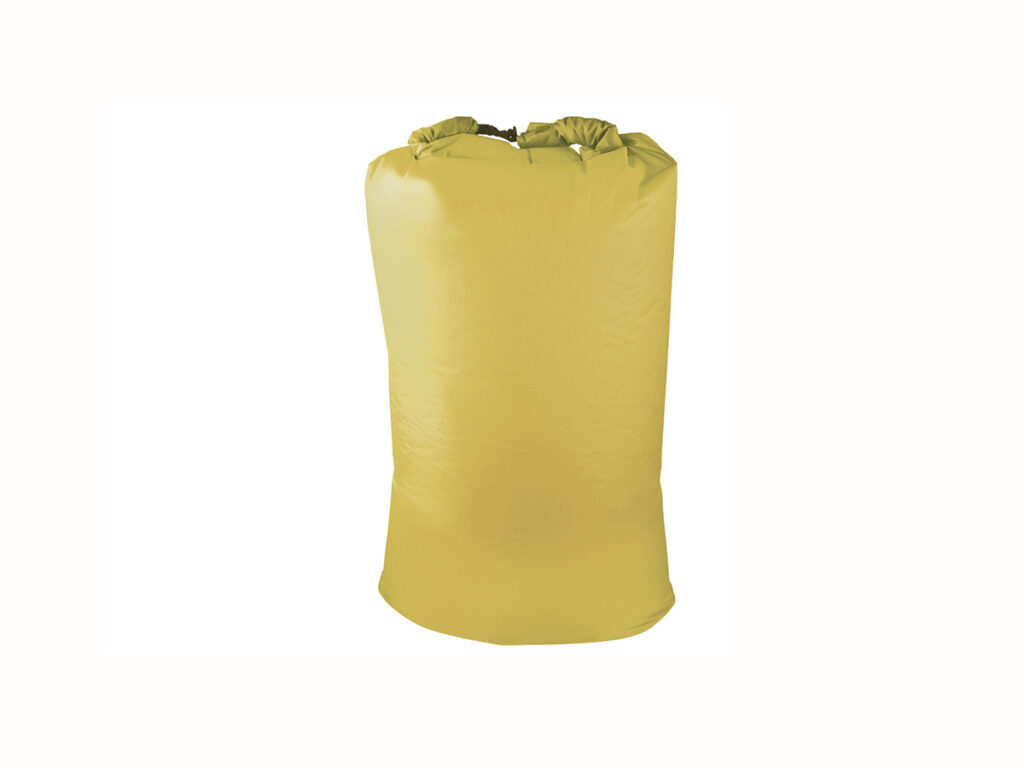
Macpac Ultralight Pack Liner 90 Litres – yellow
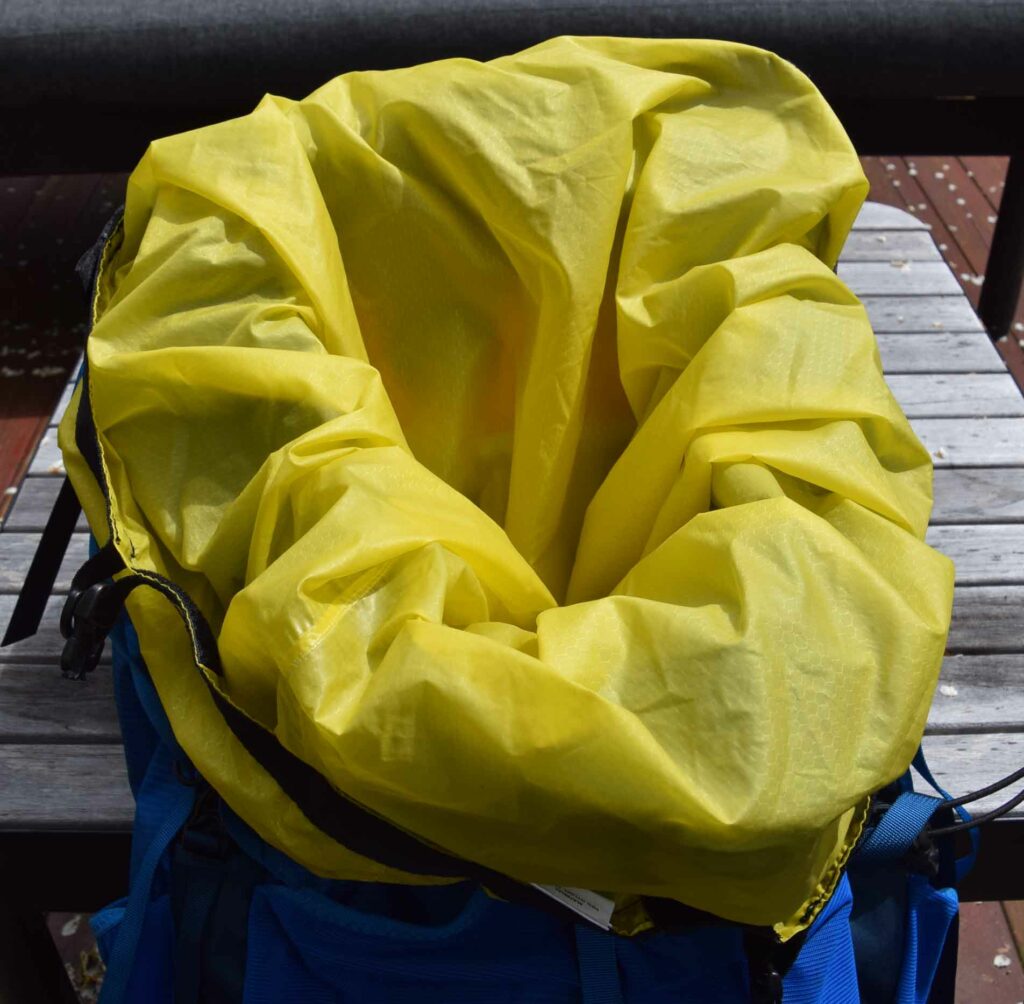
Macpac Ultralight Pack Liner with the bag mouth folded over ready to close
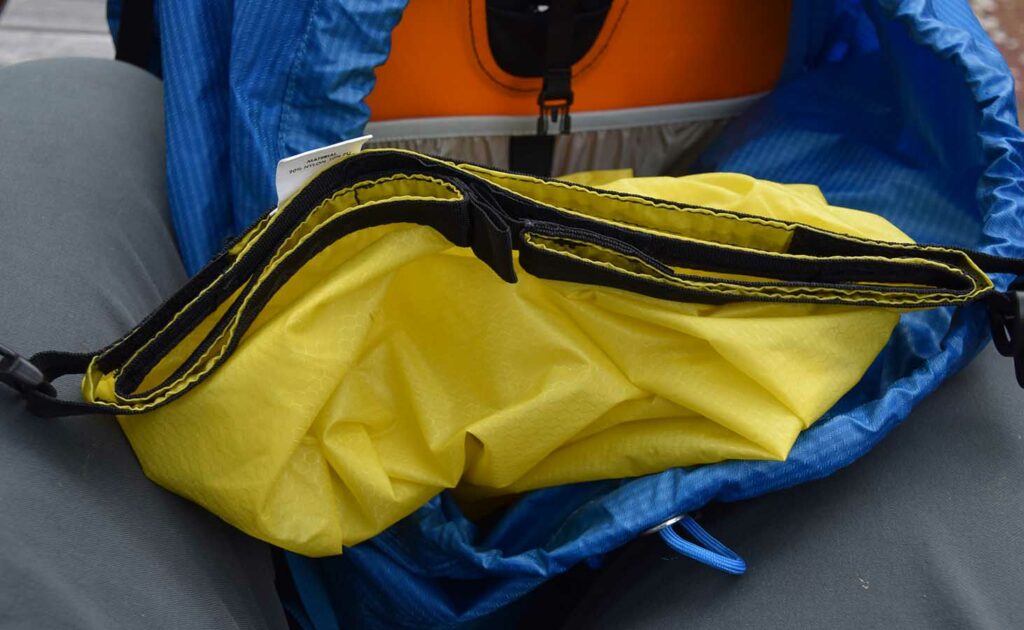
Macpac liner with top velcro and closure system aligned. If this is the first time you’ve used this style of closure system take your time aligning the rigid but flexible closures. Its also important to align the velcro tabs
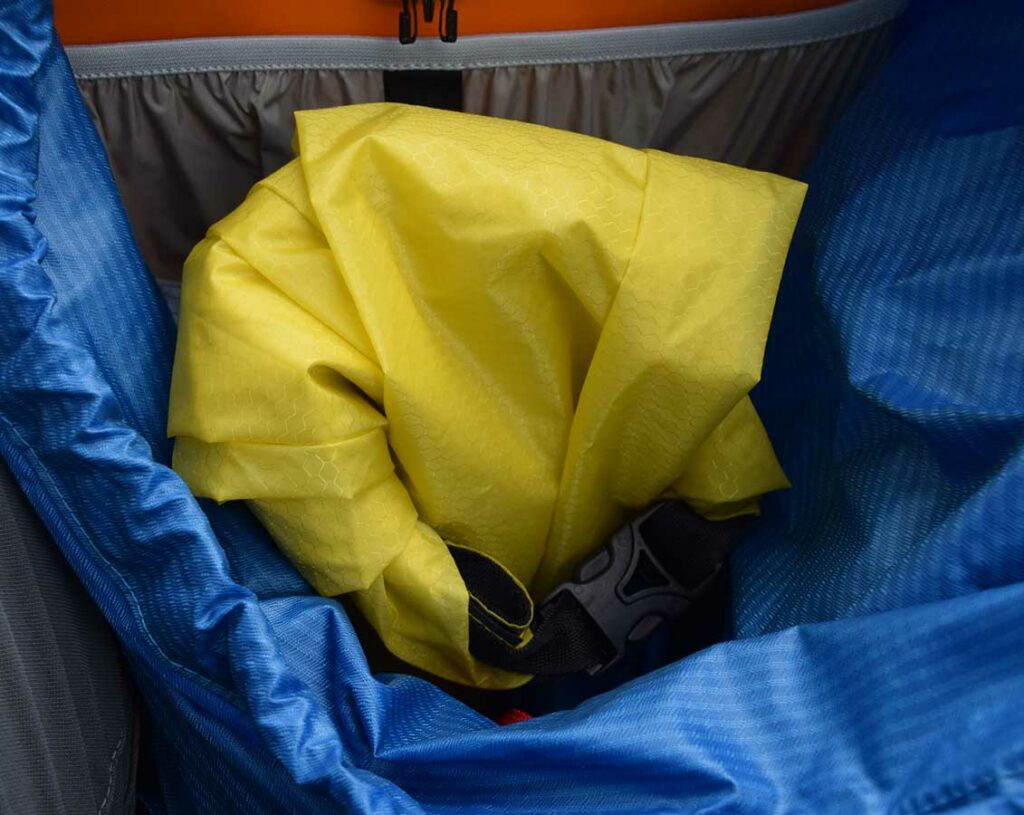
The top rolled down providing a waterproof seal. Its important you roll down the top a few times to allow for a good seal
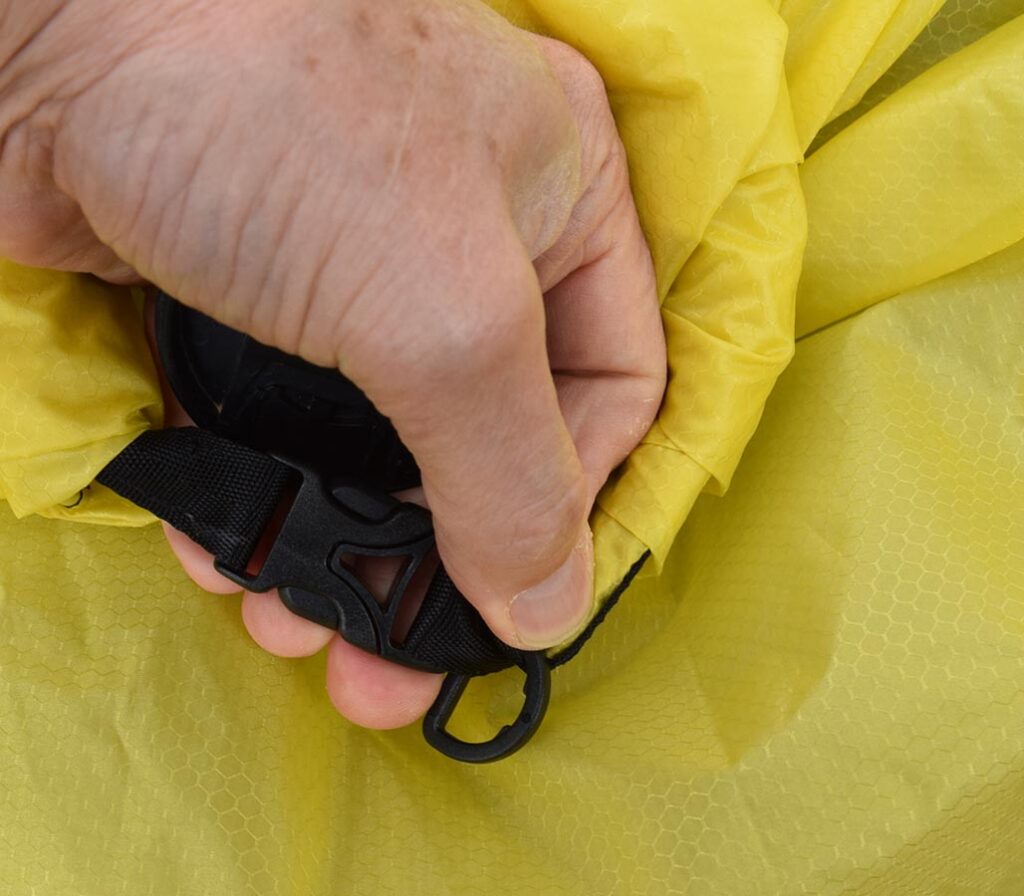
These Macpac pack liners come with a small D ring which can be used to hang the closed liner in areas where you need to protect the contents from possums and other animals
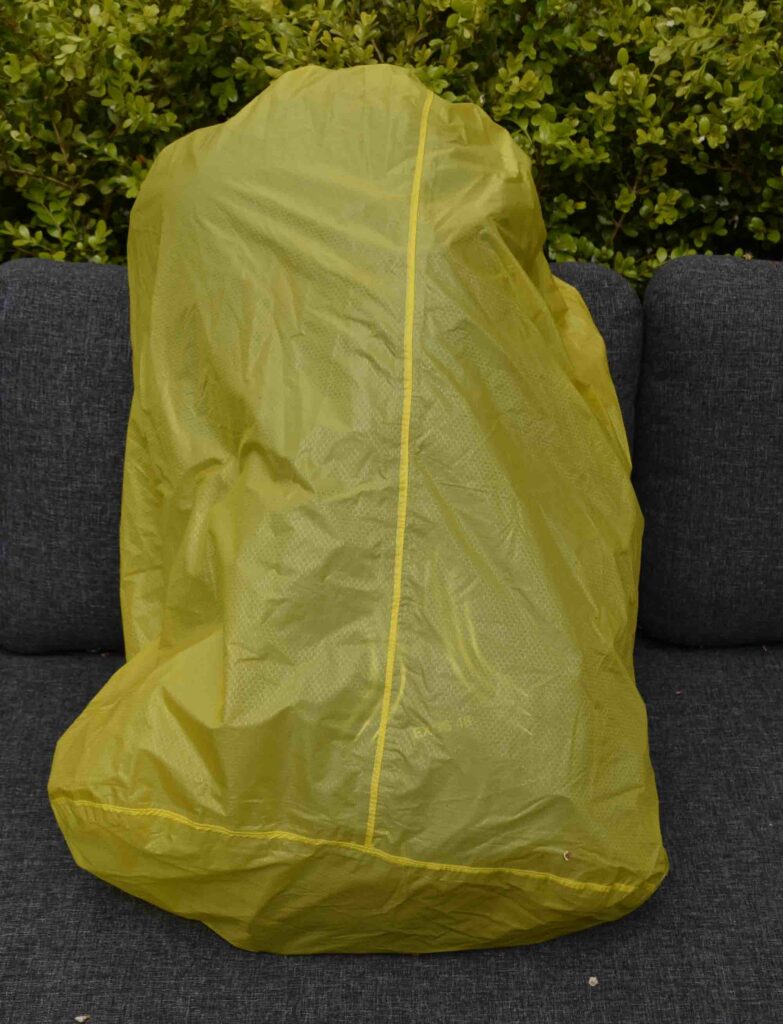
Macpac Ultralight Pack Liner 90 Litres on the outside of my Osprey Exos 48 pack and providing an additional layer of waterproofing
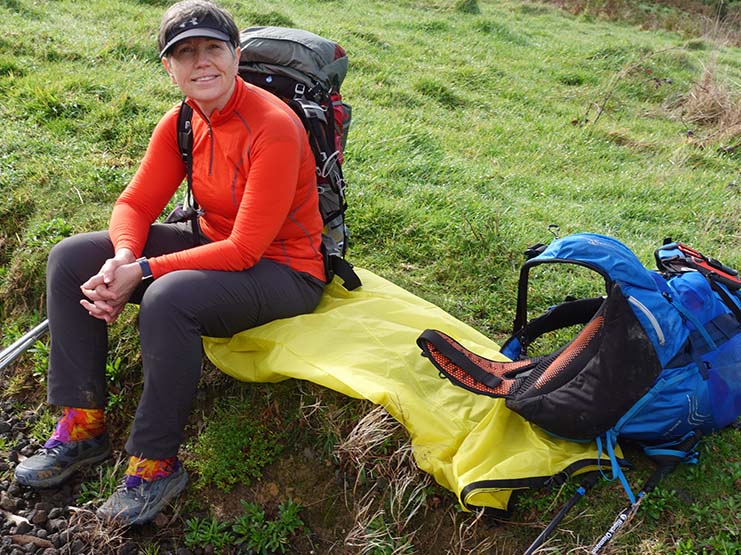
Macpac Ultralight Pack Liner 90 Litres being used as a ground sheet on the Great Ocean Walk. The ground was pretty wet so this allowed our bottoms to stay dry
We Like
- This pack liner is relatively lightweight so you will hardly notice the weight
- Protect all you gear from getting wet be it the rain or from risk of dropping it as you cross a stream
- Seam sealed to protect your gear from the wet
- Protect all you gear from getting covered in the fine dust that is so common in central Australia and other arid zones
- Wide opening mouth so its easy to get the gear in and out
- Roll top closure to ensure that water won’t get into the pack
- Shaped to easily fit into your pack ensuring maximum use of the available space
We Don't Like
- If your dry bag fills the pack then you can only access your gear through the top opening. This is only really a problem if you use a pack that has a bottom and top opening. Top access pack users won’t notice any difference
- Not the lightest pack liner
- One colour choice only
Best Uses
For hikes where rain, dust or river/inlet crossings are present. It also makes a great seat in wet conditions
Buy One
You can purchase the Macpac Ultralight Pack Liner 90 Litres online from Macpac
Disclosure: We may earn a small commission, at no additional expense to you, if you click through and make a purchase. Please note that our affiliations do not influence, in any way, the independence of our reviews. If we don’t like a product, you’ll hear about it from us!
Investment
AUD $79.99 RRP
Other Versions
- Macpac 50 Litre Ultralight Pack Liner
- Macpac 70 Litre Ultralight Pack Liner
Disclaimer
This review was done with product purchased from a retail store by Australian Hiker
Last updated
25/11/2023